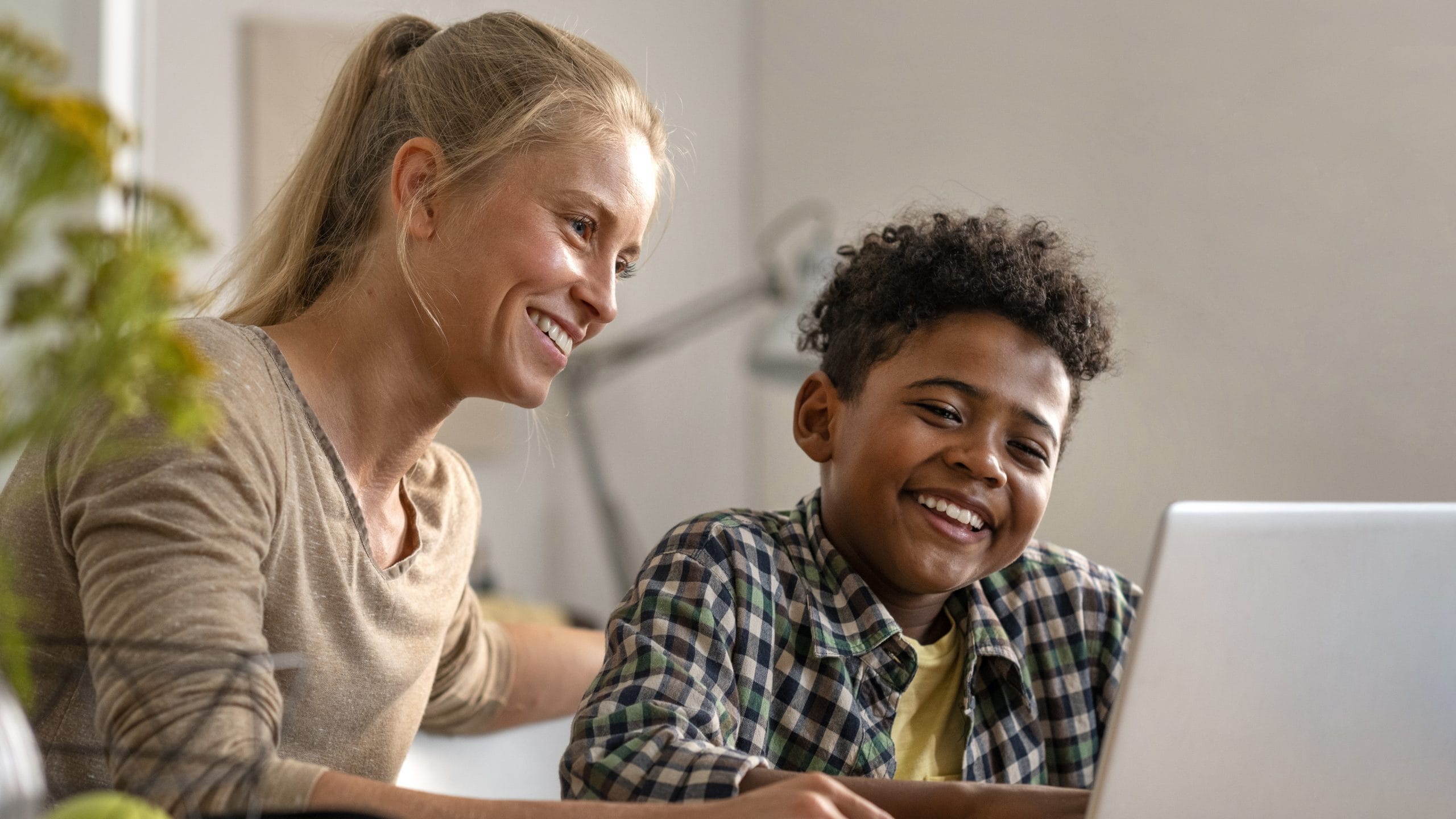There’s nothing better than seeing your child have that lightbulb moment. When something finally clicks, you can feel their confidence shift. But getting there isn’t always straightforward. Sometimes, the issue isn’t effort, it’s approach. The way information is presented can either open doors or keep them closed. Like a lock and key, the right fit can change everything.
That’s why it helps to understand how your child learns best. The VARK model breaks this down into four main learning styles: visual, auditory, read/write, and kinesthetic. It’s a simple but powerful framework that can shape how you support your child at home or through tutoring.
Experienced local tutors draw on this insight to tailor sessions that actually work for your child, not just in theory, but in practice. Here’s how personalized tutoring, grounded in your child’s learning style, can lead to real progress.
How to Spot Your Child's Learning Style and Why It Matters
Every child learns a little differently. Some need to see it, others need to hear it, write it out, or try it themselves. The key is noticing what actually helps the lesson stick.
Local tutors take time during the very first sessions to understand how each student processes information, because when the method aligns with the learner, everything becomes more effective. You can do this at home too, by observing how your child engages with schoolwork:
Do they doodle their way through a science lesson?
Do they turn spelling words into silly songs?
Do they rewrite notes in rainbow gel pens, twice?
Do they fidget through every lecture but light up during hands-on work?
These clues can point to their preferred learning style. The VARK model helps categorize these tendencies into four main types:
Visual learners absorb information best through charts, diagrams, and spatial organization.
Auditory learners retain more through spoken explanations, discussions, or repetition out loud.
Read/write learners prefer reading, note-taking, lists, and writing things in their own words.
Kinesthetic learners thrive through hands-on activities, real-world examples, and movement.
Many students are a mix, but understanding which style is most dominant can unlock more productive study habits and tutoring sessions.
Local tutors are skilled at spotting these patterns early and tailoring each session accordingly. It’s not just about what your child is learning, it’s about how they learn best.
The Visual Learner: For Those Who Need to See It to Believe It
For visual learners, clarity comes through images, structure, and space. They don’t just hear or read, they see the connection. When tutoring is tailored to this style, ideas stop feeling abstract and start making sense.
Here’s how in-person tutoring brings that to life:
Diagrams That Make It Click: Tutors use mind maps, charts, and flow diagrams to break down complex ideas into digestible visuals your child can follow and remember.
Color-Coding with Purpose: Highlighting and organizing information by color helps visual learners create structure. A tutor can teach your child how to use visual cues to make studying more intuitive.
Sketching to Solidify Concepts: Drawing out ideas, whether it’s a science process or a story arc, turns information into something your child can see and retain.
Bringing in Visual Media: When appropriate, tutors use videos, illustrations, and other imagery to add context and depth, especially for abstract or multi-step topics.
With the right approach, visual learners stay more focused, feel more confident, and retain more from each session. Experienced tutors recognize this learning style early and build lessons that make sense at a glance.
The Auditory Learner: For the Kids Who Think Out Loud
Some students need to talk it out to figure it out. Auditory learners process information best through sound. Listening, repeating, and discussing helps them lock in what they’re learning.
Here’s how personalized tutoring taps into that strength:
Explaining Out Loud: Tutors use clear verbal explanations and encourage two-way conversation. Talking through ideas helps auditory learners make sense of material in real time.
Reading to Reinforce: Whether your child is reading aloud or listening to their tutor do the same, hearing the material helps solidify understanding and gives them a chance to catch what they might miss on the page.
Sound-Based Memory Tricks: Rhymes, chants, and mnemonic devices aren’t just fun, they work. Tutors help auditory learners create memorable phrases that turn facts into something they won’t forget.
Learning On the Go: For students who benefit from repetition, tutors may suggest recording summaries or key points that your child can replay, turning review time into something they can listen to anytime.
Auditory learners thrive when learning feels like a conversation. Skilled tutors recognize that early and structure sessions to match, keeping students engaged, focused, and ready to absorb more.
The Read/Write Learner: For Those Who Think Better With Pen and Paper
Some students absorb information best when they can read it, write it down, and see it in their own words. For these learners, reading and writing aren’t just academic skills, they’re how they make sense of the world. When tutoring leans into that, it builds clarity, confidence, and long-term retention.
Here’s how an experienced tutor makes that happen:
Clear, Written Takeaways: Tutors offer written instructions, lesson outlines, and study guides so your child can review material in the format that works best for them.
Guided Note-Taking: Taking notes isn’t just helpful, it’s essential for this learner type. Tutors help students develop note-taking strategies they can rely on, even outside sessions.
Lists That Organize Thinking: From vocabulary to key concepts, lists give read/write learners structure. Tutors work alongside your child to break information into manageable, written chunks.
Summarizing to Cement Understanding: Writing short explanations or reflections helps students internalize what they’ve learned. Tutors encourage this practice to reinforce retention and build independent study skills.
For read/write learners, the written word is the most powerful tool in their academic toolkit. Skilled tutors know how to use it well, turning reading and writing into real progress.
The Kinesthetic Learner: For Those Who Stay Focused by Staying Active
Some students can’t just sit and listen, they need to move, build, and physically engage with the world around them. For hands-on thinkers, active involvement isn’t a bonus, it’s essential. When tutoring channels that energy, focus improves, confidence grows, and real comprehension follows.
Here’s how experienced tutors bring that to life:
Movement That Supports Focus: Whether using math manipulatives, acting out a story, or building a science model, tutors incorporate activities that keep students actively engaged with the material.
Real-World Applications: Concepts click faster when they connect to something tangible. Tutors bring in relatable, everyday examples that students can interact with and apply.
Role-Playing and Simulations: Acting out problems or walking through real-life scenarios adds an interactive layer that boosts both engagement and retention.
Intentional Breaks to Recharge: Short, purposeful movement breaks help reset attention and make longer sessions more effective for students who need to stay physically engaged.
With the right approach, active minds don’t feel distracted, they feel empowered. Independent tutors turn hands-on energy into meaningful academic progress.
Grade Potential: Tutoring Built Around Your Child's Strengths
Every student has a natural way of learning, and when instruction aligns with it, growth comes more easily, confidence builds, and learning feels more meaningful. Local tutors take the time to understand how your child learns best, then personalize every session to fit.
Whether your child connects through visuals, conversation, writing, or hands-on activities, Grade Potential introduces families to tutors who can bring out their best. If you’re ready for support that feels aligned and effective from day one, reach out to get started. The right fit can make all the difference.



